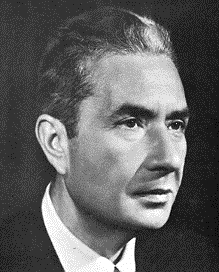
Back Aldo Moro Afrikaans Aldo Moro AN ألدو مورو Arabic الدو مورو ARZ Aldo Moro AST Aldo Moro Aymara Aldo Moro Azerbaijani Альда Мора Byelorussian Алдо Моро Bulgarian আলদো মোরো Bengali/Bangla
Aldo Moro | |||||||||||||||||||||||||||||||||||||||||||
|---|---|---|---|---|---|---|---|---|---|---|---|---|---|---|---|---|---|---|---|---|---|---|---|---|---|---|---|---|---|---|---|---|---|---|---|---|---|---|---|---|---|---|---|
 | |||||||||||||||||||||||||||||||||||||||||||
| Prime Minister of Italy | |||||||||||||||||||||||||||||||||||||||||||
| In office 23 November 1974 – 30 July 1976 | |||||||||||||||||||||||||||||||||||||||||||
| President | Giovanni Leone | ||||||||||||||||||||||||||||||||||||||||||
| Deputy | Ugo La Malfa | ||||||||||||||||||||||||||||||||||||||||||
| Preceded by | Mariano Rumor | ||||||||||||||||||||||||||||||||||||||||||
| Succeeded by | Giulio Andreotti | ||||||||||||||||||||||||||||||||||||||||||
| In office 5 December 1963 – 25 June 1968 | |||||||||||||||||||||||||||||||||||||||||||
| President | |||||||||||||||||||||||||||||||||||||||||||
| Deputy | Pietro Nenni | ||||||||||||||||||||||||||||||||||||||||||
| Preceded by | Giovanni Leone | ||||||||||||||||||||||||||||||||||||||||||
| Succeeded by | Giovanni Leone | ||||||||||||||||||||||||||||||||||||||||||
| |||||||||||||||||||||||||||||||||||||||||||
| |||||||||||||||||||||||||||||||||||||||||||
| |||||||||||||||||||||||||||||||||||||||||||
| Personal details | |||||||||||||||||||||||||||||||||||||||||||
| Born | Aldo Romeo Luigi Moro 23 September 1916 Maglie, Kingdom of Italy | ||||||||||||||||||||||||||||||||||||||||||
| Died | 9 May 1978 (aged 61) Rome, Italy | ||||||||||||||||||||||||||||||||||||||||||
| Manner of death | Assassination | ||||||||||||||||||||||||||||||||||||||||||
| Political party | Christian Democracy | ||||||||||||||||||||||||||||||||||||||||||
| Spouse | |||||||||||||||||||||||||||||||||||||||||||
| Children | 4, including Maria Fida Moro | ||||||||||||||||||||||||||||||||||||||||||
| Alma mater | University of Bari | ||||||||||||||||||||||||||||||||||||||||||
| Occupation | Professor | ||||||||||||||||||||||||||||||||||||||||||
| Signature |  | ||||||||||||||||||||||||||||||||||||||||||
Aldo Romeo Luigi Moro (Italian pronunciation: [ˈaldo ˈmɔːro]; 23 September 1916 – 9 May 1978) was an Italian statesman and prominent member of Christian Democracy (DC) and its centre-left wing.[1] He served as prime minister of Italy in five terms from December 1963 to June 1968 and from November 1974 to July 1976.[2][3]
Moro served as Italian Minister of Foreign Affairs from May 1969 to July 1972 and again from July 1973 to November 1974. During his ministry, he implemented a pro-Arab policy. Moreover, he was appointed Italy's Minister of Justice and of Public Education during the 1950s. From March 1959 until January 1964, he served as secretary of the DC.[4] On 16 March 1978, the kidnapping of Moro by the far-left armed group Red Brigades took place; he was killed after 55 days of captivity.[5]
Moro was one of Italy's longest-serving post-war prime ministers, leading the country for more than six years. Moro implemented a series of social and economic reforms that modernized the country.[6] Due to his accommodation with the Italian Communist Party leader Enrico Berlinguer, known as the Historic Compromise,[7] Moro is widely considered to be one of the most prominent fathers of the modern Italian centre-left. He governed Italy through the Organic centre-left.[8][9]
- ^ Pirro, Deirdre (6 September 2007). "Aldo Moro". The Florentine. Archived from the original on 6 September 2023. Retrieved 6 September 2023.
- ^ "Aldo Moro | Italian Prime Minister & Political Leader | Britannica". Encyclopædia Britannica. 20 July 1998. Retrieved 11 August 2023.
- ^ "Mòro, Aldo nell'Enciclopedia Treccani". Treccani (in Italian). 2011. Retrieved 6 August 2023.
- ^ "Biografia: Aldo Moro – Almanacco". Mondi.it (in Italian). 2012. Retrieved 6 August 2023.
- ^ "Il rapimento Moro". Rai Scuola (in Italian). 31 January 2012. Archived from the original on 10 June 2020. Retrieved 6 August 2023.
- ^ "[Pillole di storia italiana] Le riforme del primo centrosinistra: Moro tessitore d'Italia". Tooby (in Italian). 29 November 2008. Retrieved 6 August 2023.
- ^ Broder, David (9 May 2018). "Historically Compromised". Jacobin. Retrieved 6 August 2023.
- ^ Panzarino, Pietro (2014). Il centro-sinistra di Aldo Moro (1958–1968) (in Italian). Marsilio. ISBN 978-88-317-1789-2. Retrieved 6 August 2023 – via Google Books.
- ^ Rolandi, Luca (15 March 2018). "La lezione di Aldo Moro, quarant'anni dopo". La Voce e il Tempo (in Italian). Retrieved 6 August 2023.
© MMXXIII Rich X Search. We shall prevail. All rights reserved. Rich X Search